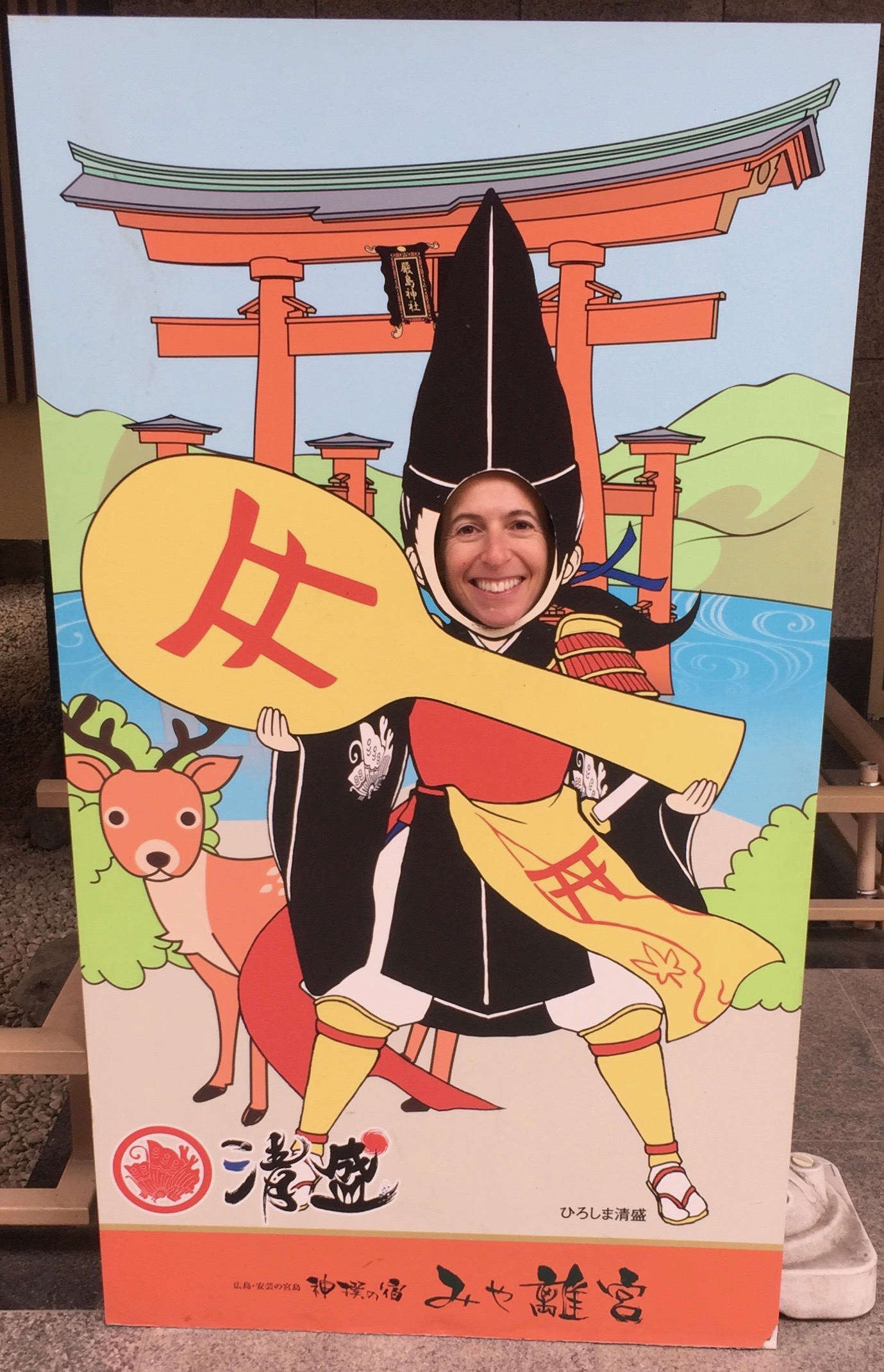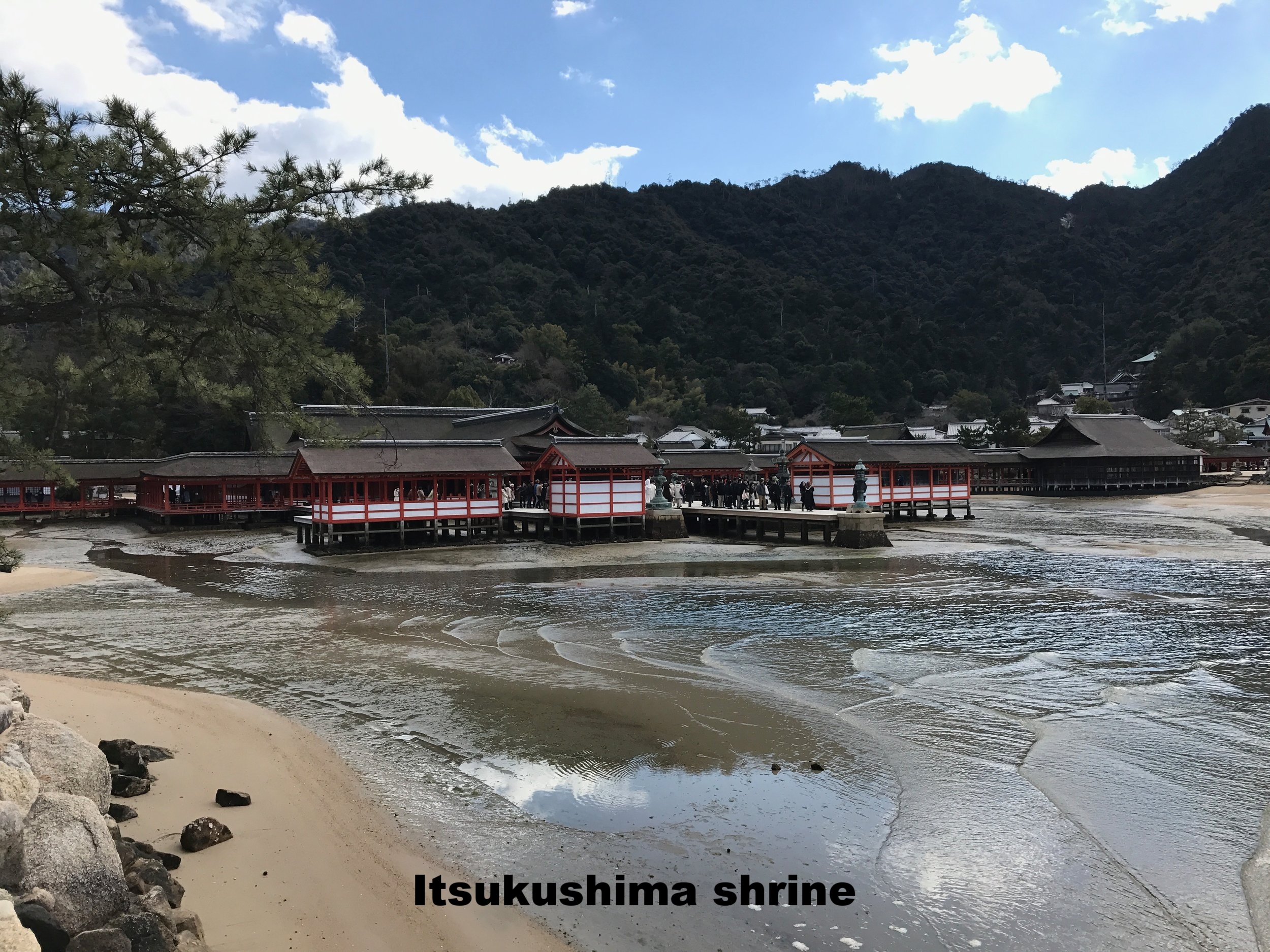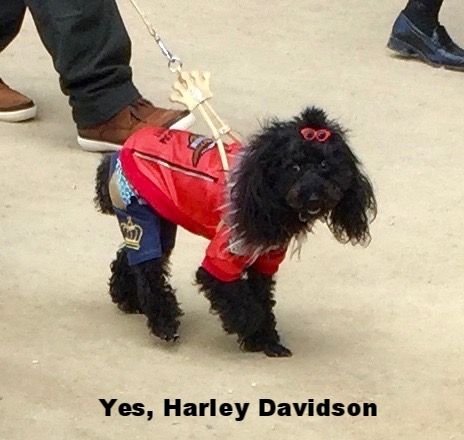An American In Hiroshima
Hiroshima is a beautiful and vibrant city, typically Japanese in its orderliness and its extensive and easy to negotiate transit system. It’s also home to my favorite Japanese street food: Okonomiyaki. This mélange of noodle, cabbage, bonito flakes, shiso leaf, pork, egg, and sweet sauce is unique and delicious. There are two styles of Okonomiyaki. One is the Osaka style, where all the ingredients are mixed into a giant dense frittata-style pancake. The other is the superior (to me!) Hiroshima style. In this version, the ingredients are all layered so that you can enjoy all the flavors separately and combined. If you want great okonomiyaki without the hype, go to Yakunga on the sixth floor of the Full Focus building across the street from Hiroshima Station.




Hiroshima is a city speeding toward it’s future. New construction, new shops, westernized and modernized, building and growing. It is also however a city where the past lingers. Whether it is a plaque on a tree celebrating fauna’s ability to withstand an atomic explosion, or The Peace Museum’s graphic and horrifying chronicling of the Bomb and it’s effects, the underlying sentiment always seems to be one of hope. It actually gives me hope in these uncertain times.


We planned our visit to coincide with the 34th annual Miyajima Island oyster festival. After taking a quick ferry trip to the island, we encountered the carnival like atmosphere that always surrounds this weekend extravaganza. Here all things oyster were available: fried oysters, grilled oysters, fresh oysters, oyster curry bread…you get the idea. Imagine the Japanese version of Martha’s Vineyard with food vendors, bustling little shops of all kinds, with just a couple of uniquely Japanese attractions: The Owl and Cat café, the world’s largest rice scoop (not really a scoop, more like a paddle), and shrines and Pagodas (of course). There are two things unique to the island. One is Momiji Manju, its Maple leaf confections. These are cookies/cakes with various fillings – the ubiquitous sweet bean paste, chestnut and apple - and consistencies, from cake-y to crispy. Delicious in all their iterations and hard to resist! The second is Miyajima’s historic Torii gate that marks not only the port, but the entrance to the Itsukushima Shrine. Torii gates mark the transition from the profane to the sacred in Shinto culture.






Also on display was Japan’s tiny dog culture. So many tiny dogs dressed in their finest pseudo human livery.


Japan loves baseball. Hiroshima is no exception. Even though we were too early to see The Hiroshima Carp play a game (at the Mazda Zoom Zoom Stadium, and no, I didn’t make up that name!), the billboards and manhole covers pay testament to their fans obsessions.
On our final day in Hiroshima we visited a beautiful oasis located in the middle of the city. Shukkeien garden is a miniature landscape garden portraying various Japanese pastoral landscapes, including a miniature Mt. Fuji! The name literally translates to “shrunken scenery garden”. Amazing in its depiction of the various aspects of Japans rugged and flowing terrain, but equally surprising is the tranquility and quiet of this park located in the clamor of Japan’s 11th largest city.







